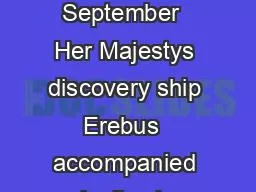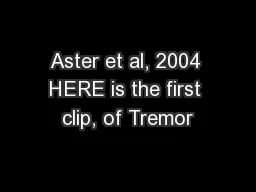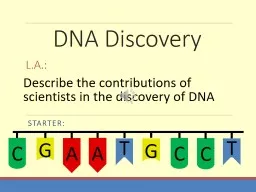PDF-On the th September Her Majestys discovery ship Erebus accompanied by its sis
Author : yoshiko-marsland | Published Date : 2015-03-19
Among the 64 men on board was Joseph Dalton Hooker 22 years old and newly qualified as the ships assistant surgeon and the expeditions botanist It would be 4 years
Presentation Embed Code
Download Presentation
Download Presentation The PPT/PDF document "On the th September Her Majestys discov..." is the property of its rightful owner. Permission is granted to download and print the materials on this website for personal, non-commercial use only, and to display it on your personal computer provided you do not modify the materials and that you retain all copyright notices contained in the materials. By downloading content from our website, you accept the terms of this agreement.
On the th September Her Majestys discovery ship Erebus accompanied by its sis: Transcript
Download Rules Of Document
"On the th September Her Majestys discovery ship Erebus accompanied by its sis"The content belongs to its owner. You may download and print it for personal use, without modification, and keep all copyright notices. By downloading, you agree to these terms.
Related Documents














